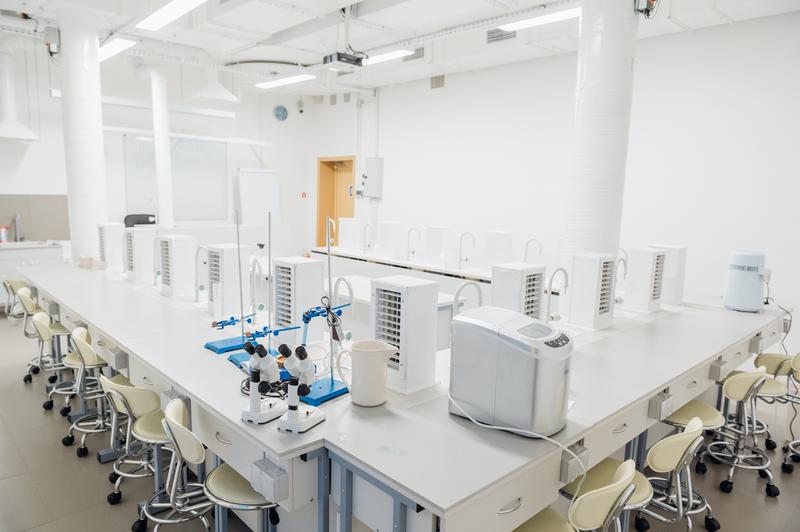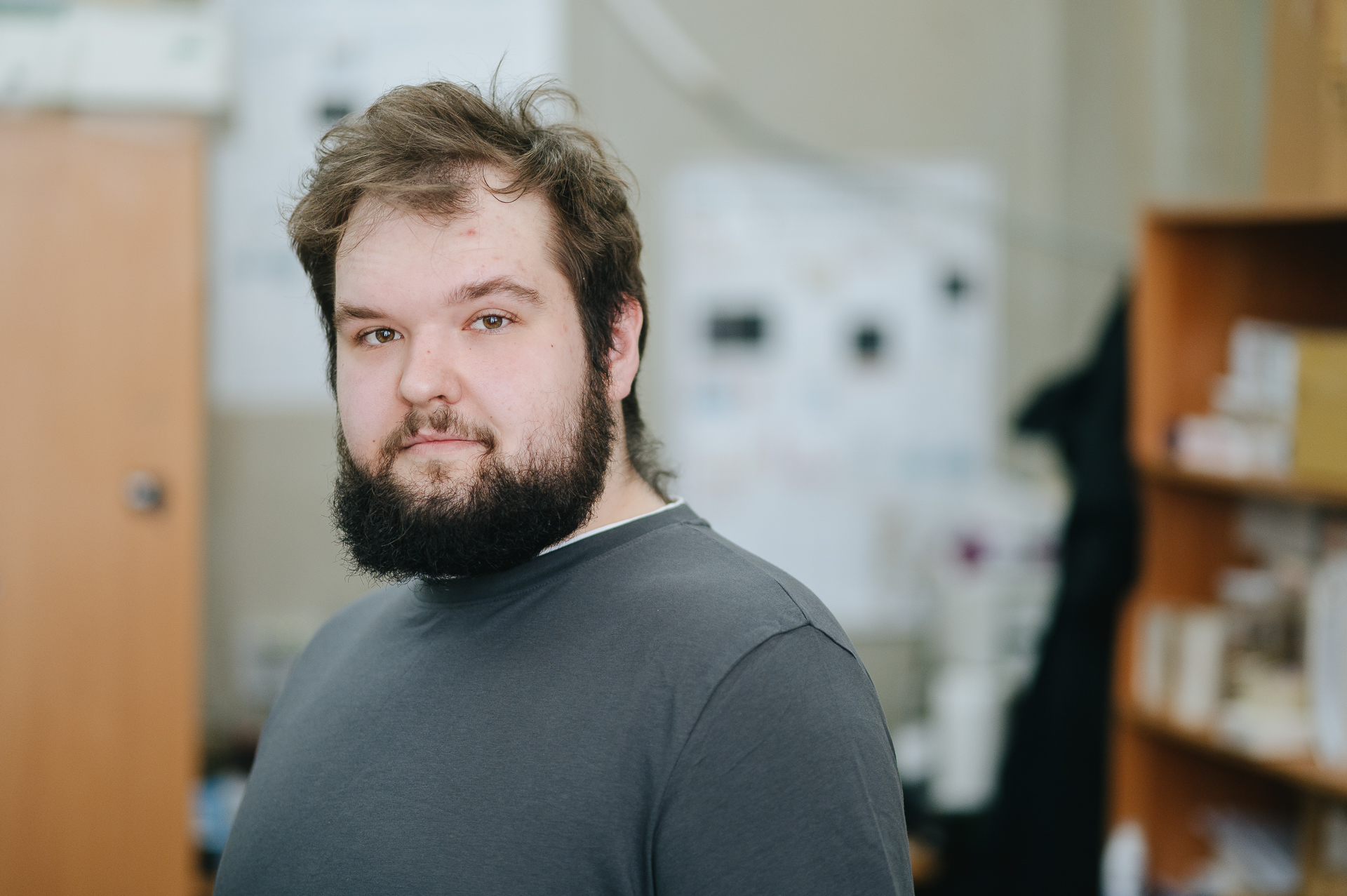Russian Scientists Improve Water Purification Membranes Using Metal Ions

Researchers have proposed using polymer membranes modified with copper, zinc, and chromium metal ions for water purification. These polymers were used for the first time in water purification via electrodialysis. Copper-based membranes demonstrated record selectivity for monovalent ions, opening new possibilities for sustainable water recycling. The study has been published in the Journal of Membrane Science.
Electrodialysis is a water purification method that removes contaminants without chemical reagents by moving ions through a membrane under an electric field. The efficiency of purification depends on the membrane’s properties, particularly its selectivity—the ability to allow certain ions to pass while blocking others. Polymer membranes typically allow multivalent ions, such as sulphates, to pass through more easily than monovalent ions like nitrates. This results in precipitate forming on the membrane surface, which block ion transfer and can lead to system failure. Therefore, scientists are developing ways to enhance membrane selectivity for monovalent ion transport.
Electrodialysis membranes are usually made of polymers containing channels with charged walls that selectively permit ions to pass. A conventional polymer consists of a chain of carbon atoms with charged functional groups attached via strong covalent bonds. These groups are part of the polymer’s structure because they are fixed to its side chain.
HSE scientists have demonstrated how a simple modification can enhance the selectivity of polymer membranes. They used polybenzimidazole (PBI)-based membranes embedded with metal ions—copper, zinc, and chromium. In this structure, metals bonded with nitrogen atoms from the polymer through coordination bonds, which are easier to form and break compared to strong covalent bonds. This property allows the material’s structure to be modified and adapted for specific applications.

‘A typical polymer can be imagined as a string of lights, where the main chain is the wire and the functional groups are bulbs attached to it. In regular membranes, the bulbs remain fixed in place, whereas in our case, they appear to levitate. We can adjust their number by adding more or fewer metal ions during synthesis, thus regulating the membrane’s properties,’ explains study author Andrey Manin, a master's student in the Chemistry of Molecular Systems and Materials programme at the HSE Faculty of Chemistry and a researcher at the Kurnakov Institute of General and Inorganic Chemistry of the Russian Academy of Sciences (IGIC RAS).
Copper-ion-enhanced membranes demonstrated record-breaking selectivity in separating nitrates from sulphates. Scientists suggest two possible explanations. Firstly, the ion channel size within the membrane structure is ideally suited for nitrate transport, while larger sulphate ions get trapped. Secondly, nitrate ions may interact with metal ions in the coordination sphere, facilitating their passage through the membrane.
Experiments confirmed that copper-infused membranes are not only effective but also stable, retaining their properties over extended use. This is a significant advantage over zinc-based membranes, where zinc ions leached from the polymer matrix, contaminating water with heavy metals. Scientists are exploring several ways to scale the technology for industrial application.
‘In our experiment, we used substituted polybenzimidazole synthesised by our colleagues at INEOS RAS. However, for industrial production, a more accessible and widely manufactured polymer, such as unsubstituted polybenzimidazole, could be used. Another option is to apply a thin layer of the synthesised polymer with metal ions onto commercially available electrodialysis membranes. This approach would enhance selectivity while maintaining conductivity due to the base material. Since these membranes are already produced using well-established processes, adding one more stage would not significantly impact production costs but could greatly improve membrane efficiency,’ says Andrey Manin.
See also:
Scientists Discover That the Brain Responds to Others’ Actions as if They Were Its Own
When we watch someone move their finger, our brain doesn’t remain passive. Research conducted by scientists from HSE University and Lausanne University Hospital shows that observing movement activates the motor cortex as if we were performing the action ourselves—while simultaneously ‘silencing’ unnecessary muscles. The findings were published in Scientific Reports.
Russian Scientists Investigate Age-Related Differences in Brain Damage Volume Following Childhood Stroke
A team of Russian scientists and clinicians, including Sofya Kulikova from HSE University in Perm, compared the extent and characteristics of brain damage in children who experienced a stroke either within the first four weeks of life or before the age of two. The researchers found that the younger the child, the more extensive the brain damage—particularly in the frontal and parietal lobes, which are responsible for movement, language, and thinking. The study, published in Neuroscience and Behavioral Physiology, provides insights into how age can influence the nature and extent of brain lesions and lays the groundwork for developing personalised rehabilitation programmes for children who experience a stroke early in life.
Scientists Test Asymmetry Between Matter and Antimatter
An international team, including scientists from HSE University, has collected and analysed data from dozens of experiments on charm mixing—the process in which an unstable charm meson oscillates between its particle and antiparticle states. These oscillations were observed only four times per thousand decays, fully consistent with the predictions of the Standard Model. This indicates that no signs of new physics have yet been detected in these processes, and if unknown particles do exist, they are likely too heavy to be observed with current equipment. The paper has been published in Physical Review D.
HSE Scientists Reveal What Drives Public Trust in Science
Researchers at HSE ISSEK have analysed the level of trust in scientific knowledge in Russian society and the factors shaping attitudes and perceptions. It was found that trust in science depends more on everyday experience, social expectations, and the perceived promises of science than on objective knowledge. The article has been published in Universe of Russia.
Scientists Uncover Why Consumers Are Reluctant to Pay for Sugar-Free Products
Researchers at the HSE Institute for Cognitive Neuroscience have investigated how 'sugar-free' labelling affects consumers’ willingness to pay for such products. It was found that the label has little impact on the products’ appeal due to a trade-off between sweetness and healthiness: on the one hand, the label can deter consumers by implying an inferior taste, while on the other, it signals potential health benefits. The study findings have been published in Frontiers in Nutrition.
HSE Psycholinguists Launch Digital Tool to Spot Dyslexia in Children
Specialists from HSE University's Centre for Language and Brain have introduced LexiMetr, a new digital tool for diagnosing dyslexia in primary school students. This is the first standardised application in Russia that enables fast and reliable assessment of children’s reading skills to identify dyslexia or the risk of developing it. The application is available on the RuStore platform and runs on Android tablets.
Physicists Propose New Mechanism to Enhance Superconductivity with 'Quantum Glue'
A team of researchers, including scientists from HSE MIEM, has demonstrated that defects in a material can enhance, rather than hinder, superconductivity. This occurs through interaction between defective and cleaner regions, which creates a 'quantum glue'—a uniform component that binds distinct superconducting regions into a single network. Calculations confirm that this mechanism could aid in developing superconductors that operate at higher temperatures. The study has been published in Communications Physics.
Neural Network Trained to Predict Crises in Russian Stock Market
Economists from HSE University have developed a neural network model that can predict the onset of a short-term stock market crisis with over 83% accuracy, one day in advance. The model performs well even on complex, imbalanced data and incorporates not only economic indicators but also investor sentiment. The paper by Tamara Teplova, Maksim Fayzulin, and Aleksei Kurkin from the Centre for Financial Research and Data Analytics at the HSE Faculty of Economic Sciences has been published in Socio-Economic Planning Sciences.
Larger Groups of Students Use AI More Effectively in Learning
Researchers at the Institute of Education and the Faculty of Economic Sciences at HSE University have studied what factors determine the success of student group projects when they are completed with the help of artificial intelligence (AI). Their findings suggest that, in addition to the knowledge level of the team members, the size of the group also plays a significant role—the larger it is, the more efficient the process becomes. The study was published in Innovations in Education and Teaching International.
New Models for Studying Diseases: From Petri Dishes to Organs-on-a-Chip
Biologists from HSE University, in collaboration with researchers from the Kulakov National Medical Research Centre for Obstetrics, Gynecology, and Perinatology, have used advanced microfluidic technologies to study preeclampsia—one of the most dangerous pregnancy complications, posing serious risks to the life and health of both mother and child. In a paper published in BioChip Journal, the researchers review modern cellular models—including advanced placenta-on-a-chip technologies—that offer deeper insights into the mechanisms of the disorder and support the development of effective treatments.


